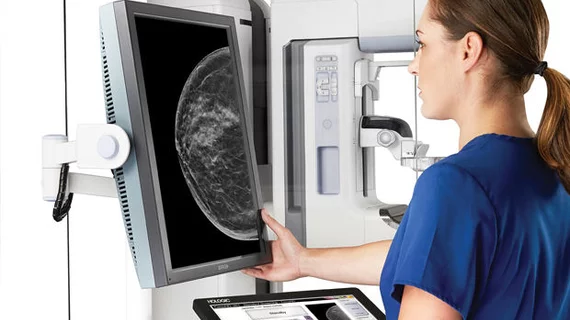On February 15 of this year, Congress passed national breast density legislation, which mandates all mammography reports and summaries notify women of their breast density.
In a recent JAMA commentary, a trio of researchers questioned whether the law will actually help patients, sharing some of their most pressing concerns.
“Providing women information about breast density has the potential to inform patients and increase their knowledge and involvement in health care decisions,” wrote first author Nancy L. Keating, MD, MPH, of Harvard Medical School’s Department of Health Care Policy in Boston, and colleagues. “Nevertheless, such efforts may have unintended consequences. Breast density notification may increase confusion and anxiety about mammography and breast cancer risk without providing clear recommendations about what women with dense breasts should do.”
Below are three of the author’s concerns about federal breast density notification:
Additional imaging tests
The breast density legislation—which directs the FDA to oversee the notification process—proposes mammography summaries inform patients that some with high density may need additional imaging tests, but that is “not supported by evidence,” the authors say.
“There are no data to suggest that supplemental imaging for women with dense breasts improves cancer outcomes, including mortality, and such imaging is associated with false-positive results, unnecessary biopsies, and presumably overdiagnosis,” they added.
Keating and colleagues pointed to a number of modality-related statistics to prove their point. Supplemental ultrasound, for example, can detect an additional 4.4 cancer per 1,000 exams, but has a recall rate of 14% and a positive predictive value of 0.03 to 0.08.
Similarly, breast MRI in women with dense breasts can find up to 7 additional cancers per 1,000 exams, but demonstrated recall rates of 9% to 23% and requires gadolinium contrast—which poses potential dangers.
Determining dense vs. nondense breasts
Keating et al. noted that there is variability and limited reproducibility in determining dense vs. nondense breasts whether images are read by the same, or different radiologists.
Reclassification from nondense to dense or vice versa occurs in 13% to 19% of women over a two to three year period, the authors noted.
“Such inconsistency could reduce a woman’s confidence in the screening process and create confusion about her breast cancer risk; it could also raise unnecessary alarm for women who are only sometimes classified as having dense breasts,” the researchers wrote.
Communication
A majority of breast density notification language is hard to understand; scoring has shown its readability is at a high school level or above, higher than most state’s literacy levels.
If the language is easily understood across all states, the proposed rule could improve mammography reporting, the authors noted. But “even with optimal language, patients will need additional counseling by primary care clinicians.”
Overall, the authors encouraged organizations and individuals to comment on the proposed rule by June 26, 2019.
They also concluded that clinicians should use breast density notification as an opportunity to discuss individual risk factors, screening options and the potential risks and benefits of additional imaging with patients.

